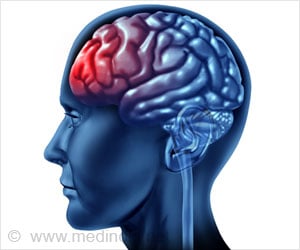New research reveals distinct brain activity associated with mixed emotions, proving they are not just a blend of positive and negative feelings.
- Mixed emotions show unique neural activity, distinct from purely positive or negative emotions
- The study reveals that mixed emotions remain stable over time, challenging the idea of emotional flip-flopping
- Research indicates that understanding mixed emotions could enhance insights into human psychology and emotional resilience
Neural patterns associated with mixed valence feelings differ in consistency and predictability throughout the brain
Go to source).
The Pixar movie Inside Out has inspired real scientific studies on emotions. Researchers now use animated films to evoke and study complex emotional responses in the brain!’
Debate on Mixed Emotions
For years, scientists have debated whether mixed emotions are a unique state of mind or simply a rapid alternation between positive and negative feelings. The new study from USC Dornsife neuroscientists aims to settle this debate by examining the neural activity associated with these complex emotional experiences.Distinct Neural Activity Patterns While Experiencing Mixed Emotions
The research, published in the journal Cerebral Cortex, reveals that the brain exhibits distinct neural patterns when experiencing mixed emotions such as bittersweetness. This discovery supports the idea that mixed emotions are a unique and stable state, rather than a fluctuation between positive and negative feelings.Key Findings
Unique Neural Activity: The study found that mixed emotions elicited unique neural activity in areas of the brain such as the amygdala and nucleus accumbens. This activity was distinct from the patterns observed during purely positive or negative emotions.
Predictable Emotional Shifts: Researchers could predict when participants would shift emotions based on changes in specific brain regions like the insular cortex. These findings indicate a measurable and consistent neural basis for mixed emotions.
Stability Over Time: “Not only did we find brain activity that was correlated with mixed emotions, but we found that it held steady over time,” says Anthony Vaccaro, lead author of the study and a postdoctoral researcher at the Neuroendocrinology of Social Ties Lab at USC Dornsife. This challenges the notion that mixed emotions are fleeting or unstable.
Importance of Studying Mixed Emotions
Despite being a common human experience, mixed emotions have been understudied for several reasons. Emotions are often viewed as existing on a spectrum from negative to positive, making it easier to study them in isolation. Jonas Kaplan, associate professor of psychology and co-author of the study, highlights the challenge: “It’s hard to evoke these complex emotions in a realistic way inside the lab.”To address this challenge, the researchers used a poignant animated short film, One Small Step by TAIKO Studios, known for evoking simultaneous happy and sad feelings. Participants watched the film while their brain activity was monitored using a magnetic resonance imaging (MRI) machine. After the initial viewing, participants rewatched the film without MRI and indicated when they experienced positive, negative, or mixed emotions. The researchers then compared these self-reports with the MRI results.
Practical Applications and Future Research into Mixed Emotions
This study provides a foundation for future research into mixed emotions, which Kaplan believes is crucial for understanding human psychology. “There’s a certain sophistication that’s required to sit with a mixed emotion and to allow yourself to feel positive and negative at the same time. Looking into that more, exploring the benefits of being able to accept positivity and negativity at the same time within yourself, is something we think is worth study,” Kaplan says.Kaplan and Vaccaro plan to investigate how emotional reactions fluctuate in group settings, such as watching a movie in a cinema. This next phase aims to understand the social aspects of mixed emotions and how shared experiences influence our emotional states.
The research from USC Dornsife neuroscientists provides compelling evidence that mixed emotions are real and distinct from purely positive or negative feelings. By identifying unique neural patterns associated with mixed emotions, this study opens new avenues for understanding the complexity of human emotional experiences. As we continue to explore the nuances of mixed emotions, we may uncover deeper insights into emotional resilience and mental well-being, ultimately enhancing our ability to navigate the rich tapestry of human emotions.
Reference:
- Neural patterns associated with mixed valence feelings differ in consistency and predictability throughout the brain - (https://pubmed.ncbi.nlm.nih.gov/38566509/)
Source-Medindia










